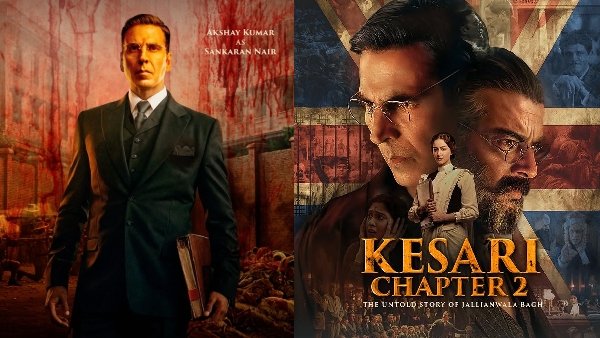Introduction: A Sequel That Aims High, But Lands Flat
Kesari Chapter Box Office Collection, So here we are with Kesari Chapter 2, the much-anticipated follow-up to the original Kesari—and this time, it’s not about the battlefield, but the courtroom. Directed by debutant Karan Singh Tyagi, this installment dives into the intense legal aftermath of the Jallianwala Bagh massacre, a story that screams for cinematic justice. With big names like Akshay Kumar and R. Madhavan on board, expectations were sky-high.
But does it deliver? Well, let’s just say the film tries… really hard. And sometimes, trying isn’t enough.
The Premise: A Courtroom Drama with a Heavyweight Backdrop
Kesari Chapter 2: The Untold Story of Jallianwala Bagh kicks off with one of the darkest days in Indian history—the Jallianwala Bagh massacre of 1919. What follows is a legal crusade led by Sir Chettur Sankaran Nair, played by Akshay Kumar, as he attempts to hold General Reginald Dyer accountable for the bloodshed. This isn’t just any courtroom battle—it’s a clash between colonial cruelty and Indian resilience.
However, instead of embracing the emotional depth and cultural complexity of its story, the film often falls into Bollywood tropes that dilute its impact.
Akshay Kumar: All Heart, But Wrong Fit
Let’s talk about the elephant in the courtroom—Akshay Kumar. No doubt, he’s got the star power, and he brings a certain gravity to the role. But is he believable as a Malayali lawyer-statesman, fluent in classical dance and martial arts? Not quite.
You can feel him giving it his all, but there’s a disconnect between the character’s roots and Akshay’s portrayal. It’s like putting a square peg in a round hole—no matter how hard you push, it won’t quite fit.
R. Madhavan Steals the Second Half
Enter R. Madhavan, who plays Neville McKinley, a worn-out, alcoholic British advocate pulled out of retirement to defend the Raj. He arrives just before the intermission and breathes much-needed life into the narrative. His character isn’t overly complex, but Madhavan plays it with finesse and conviction, making him a standout presence in the second half.
Ananya Panday Surprises, But Is Underused
Surprised to see Ananya Panday in a period courtroom drama? Same here. She plays Dilreet Gill, a young rookie lawyer inspired by Nair. Her role actually has some meat, and she pulls it off reasonably well. But like many things in Kesari Chapter 2, her character is underwritten and ends up being more of a footnote than a force.
The Real Problem: Surface-Level Storytelling
Here’s where things really fall apart. Despite tackling such a crucial chapter of history, the film doesn’t dig deep. The screenplay glosses over the larger freedom struggle, skimming past Nair’s contributions to the Indian National Congress, his legal genius, and the ideological battles he fought.
Instead, we get a heavily dramatized courtroom showdown that feels more Bollywood than British Raj. Even scenes that should be powerful—like Nair confronting a “Dogs and Indians not allowed” sign—feel formulaic.
Historical Accuracy? Let’s Just Say It’s Bollywood-ized
One of the biggest letdowns is the lack of historical nuance. The real Sankaran Nair was a towering figure in India’s freedom movement, but the film barely scratches the surface of his legacy. It misses opportunities to explore the Rowlatt Act protests, the complex dynamics in Punjab, and Nair’s legal brilliance.
Instead, it chooses to dramatize fictional confrontations and predictable plot twists, making the courtroom feel more like a stage for heroism than a battleground for truth.
There Are Moments That Shine
To be fair, there are glimpses of greatness. The early scenes showing a young Pargat Singh (Krish Rao), a survivor of the massacre, trying to make his voice heard, are moving. His interactions with Nair provide some much-needed tension and emotional weight.
Also, the film tries to touch upon themes like media suppression, narrative manipulation, and legal misuse—which resonate strongly in today’s world. But sadly, these references are fleeting, more like whispers than statements.
Direction and Screenplay: A Missed Opportunity
Director Karan Singh Tyagi has ambition, no doubt. But ambition alone doesn’t make a film work. The screenplay, co-written by Amritpal Singh Bindra, is too safe, too surface-level. It lacks the grit and complexity that a subject like this demands.
Imagine having the chance to tell the story of a man who sued the British Empire and stood up for India at a time when few dared to—and then reducing it to courtroom theatrics.
Performance Round-Up: Who Nailed It, Who Missed
-
Akshay Kumar: Passionate, but miscast.
-
R. Madhavan: Underutilized brilliance.
-
Ananya Panday: Surprisingly competent, but sidelined.
-
Simon Paisley Day & Mark Bennington: Struggle with long Hindi lines and one-dimensional characters.
-
Amit Sial as Tirath Singh: Present in many scenes, but never fully developed.
Kesari Chapter Box Office Collection: What’s the Buzz?
Let’s talk numbers, because that’s always part of the equation. The Kesari Chapter Box Office Collection has seen a decent opening due to Akshay Kumar’s loyal fanbase. However, mixed reviews and word-of-mouth are likely to affect its long-term performance. Compared to the first Kesari, which was a box office hit, the sequel may struggle to match those heights.
It’s too early to write it off completely, but let’s just say it needs more than courtroom drama to stay in the race.
Read More: GST on UPI Payments: Will Transactions Above ₹2000 Attract GST?
Conclusion
Kesari Chapter 2 had all the ingredients for a powerful historical drama—a compelling real-life story, a strong cast, and a backdrop that’s rich with emotion and meaning. But instead of digging deep, it skims the surface.
Akshay Kumar gives it everything he’s got, but he can’t carry the film on his own. Madhavan, Panday, and young Krish Rao all show sparks, but the writing lets them down. And while the Kesari Chapter Box Office Collection might look good for now, it won’t hold unless the film resonates deeply with viewers—which it just doesn’t quite manage to do.










